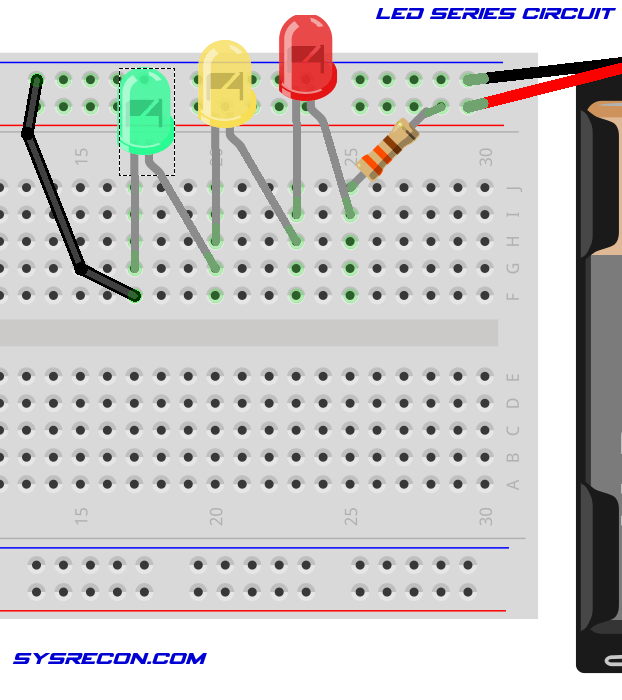
Our plan has undergone a lot of changes, and the updated bill of materials can be found in Week 4’s write-up.
Our first challenge was to figure out how to use the time-of-flight distance sensor. My partner Annan had to first solder the sensor to the L-shaped pins provided with the sensor. Then we wanted to add the LED lights.
We also didn’t know how to make a series or parallel circuit with the LED on the breadboard. With the help of people on the floor, we learned how to do both and the difference between them. The parallel circuit would connect LED lights to the same power and ground, but always via a resistor. The series circuit would mean connecting the LED lights in order: power to LED, LED ground to LED power, and the last LED would connect back to ground.

Parallel circuited LEDs and the time-of-flight distance sensor.

A diagram of a series circuit.
After this test, we asked a lab mentor about our idea, and he suggested to switch out all the LED bulbs we planned to use for our Halloween sign to a NeoPixels LED strip instead. We agreed because in our test, we tried to lengthen the pins of the LEDs by soldering extra wires to the end to connect to our breadboard. We realized that this would require us more work than we had time for, to poke holes into our board for the LEDs to fit through, and then solder wires to the ends, and connect it back to our breadboard in a parallel circuit.
At the suggestion of the mentor, we decided to get the NeoPixels LED strip, and mylar sheets for our project. We initially had some issues figuring out how to connect an LED light to our breadboard, but it was because we had incorrect cables connecting to a power supply machine, so we just soldered the Arduino nano to use the 5V connection instead.

Our original idea of connecting the lights to a power supply—this is a picture of a friend’s setup.

NeoPixels RDG strand test working with the Nano 5V.
